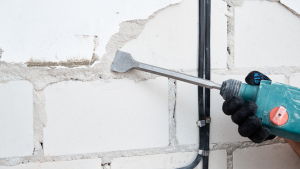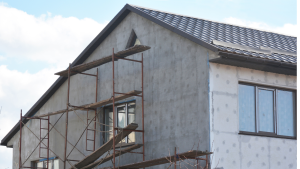Enhancing the beauty, curb appeal, and value of your home with stucco is a long-lasting, low-maintenance option. The failure of your stucco, however, might result from a variety of environmental and craftsmanship-related causes. Here, let’s have a short look at these.
Typical Causes of Stucco Failure
Enhancing the beauty, curb appeal, and value of your home with stucco is a long-lasting, low-maintenance option. Nonetheless, there are several environmental and craftsmanship-related issues that can lead to the failure of your stucco.
Installing a door or window sill incorrectly
If a door or window is installed improperly or inappropriately, water will not adequately drain from the property, which can lead to issues. If a stucco installer doesn’t properly lay water-resistant paper behind a window, water might get trapped, which can cause mold growth and structural damage.
You might anticipate cracking and eventual degradation when there isn’t a strong barrier separating your stucco work from moisture.
Ineffective Flashing Installation
Your stone and stucco work will crack and deteriorate if kick-out flashing diverters, one-piece molded plastic or metal parts intended to appropriately direct water flow, are absent or fitted incorrectly.
Inadequate Vent, Electric Outlet, and Other Moisture Entry Point Sealing
Along with window frames, incorrectly installed dryer vents, light fixtures, plumbing, and electrical outlets give moisture a way in, which can lead to stucco deterioration and other structural issues. These gaps should be properly sealed from the inside out and have effective water management systems all around them.
Faulty deck installation
In the case of taller decks, an experienced deck builder should employ water management techniques including barrier membranes, rain screens, and ledger board drip can flashing to prevent damage to the rim joist and anything below (even stucco). If you’re considering building a deck, a skilled stucco inspector can spot any current issues and offer guidance on how to safeguard your stucco.
Transition Issues in Materials
Transitions between stucco and other building materials, such as stone, concrete, siding, and brick, can pose problems if all of the joints between these disparate materials have not been properly sealed for expansion and contraction, which can lead to and exacerbate both cracking and water penetration. The same as with windows, doors, and chimneys, appropriate flashing of these seams to enable sufficient water drainage will help to keep stucco from suffering significant harm.
Call our stucco specialists if you live close to Jersey City for an inspection, construction, or repair.




